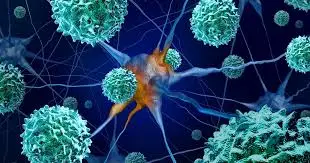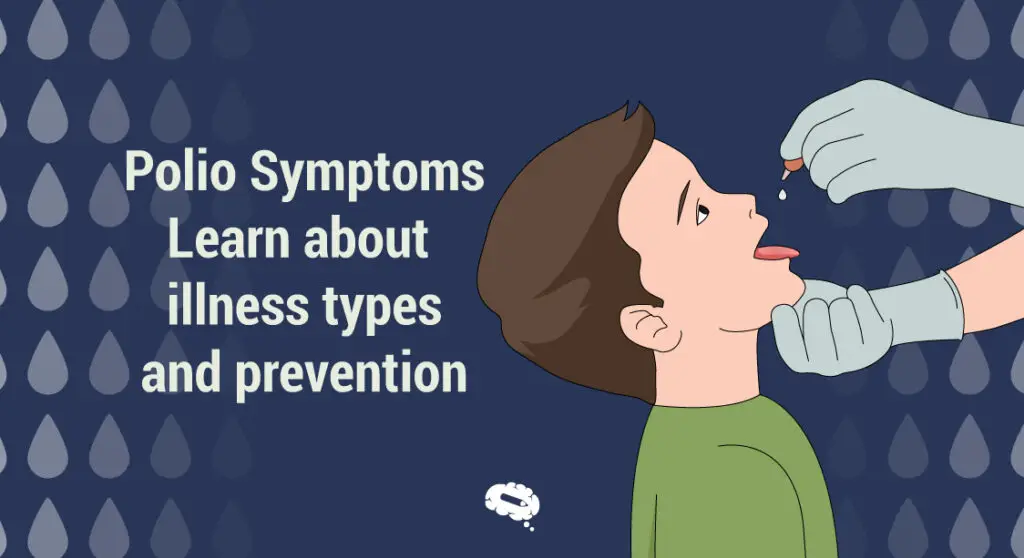polio disease! poliovirus!
Poliomyelitis:
Get insights into the polio disease, its cause, symptoms, and prevention. Poliomyelitis is greatly reduced in number due to vaccination, but it does still exist in a few countries.
The chance of polio is higher if you are not fully vaccinated, so it’s important to make sure you and your child are up-to-date with your vaccines.

What is poliomyelitis?
- Polio, or poliomyelitis, is a highly contagious viral infection caused by the poliovirus.
- Infection is more common in infants and young children.
- It primarily affects the Nervous system
How does polio spread?
The virus spreads through contact with contaminated food, water, or surfaces and person-to-person contact, especially through fecal-oral transmission.
You can get polio from:
⦁ Contact with the feces (poop) of an infected person
⦁ Droplets from a sneeze or cough of an infected person (less common).
For example, you can get polio if you:
⦁ Eat raw or undercooked food or drink water or other drinks that are contaminated with the feces of an infected person.
⦁ Put a contaminated object such as a toy in your mouth.
⦁ Touch a contaminated object and put your fingers in your mouth.
⦁ Have close contact with a person sick with polio, for example, when caring for them.
Who is at risk for polio disease?
Anyone who is not up-to-date with their polio vaccines is at risk of getting polio.
Polio has been eliminated from most of the world, but the disease still occurs in other parts of the world. It only takes one person with polio traveling from another country to bring polio into your country.

Non-Paralytic Polio (Milder form)
The incubation period for nonparalytic symptoms is 3 to 6 days.
This form is mild, doesn’t lead to paralysis, and usually causes flu-like symptoms and lasts for a few days to weeks and includes:
⦁ Fever
⦁ Sore throat
⦁ Headache
⦁ Fatigue
⦁ Nausea or vomiting
⦁ Stiffness in neck and back
⦁ Muscle Pain or tenderness
This form of polio is rare and more severe form can lead to paralysis and symptoms may initially resemble to non-paralytic polio but progress to more serious signs like
⦁ Severe muscle pain and weakness
⦁ Sudden paralysis (often affecting one side of body more than other side)
⦁ Difficulty in breathing (if muscles involved in breathing are affected)
⦁ Loss of reflexes.
The onset of paralysis usually occurs 7 to 21 days after infection.

Polio vaccine:
There is no cure for polio (or poliomyelitis), but it can be prevented with safe and effective vaccination.
CDC recommends that children get 4 doses of polio vaccine to protect them against severe polio disease, including paralysis.
Types of Polio Vaccines:
There are two types of vaccines that protect against polio.
Inactivated polio vaccine (IPV)
⦁ Contains inactivated (killed) version of poliovirus
⦁ It stimulates the immune system to produce antibodies against the virus without causing disease.
⦁ It is given by shot in the leg or arm, depending on the patient’s age.
⦁ Provides protection from all 3 strains of poliovirus (types 1, 2, and 3)
Oral polio vaccine (OPV)
⦁ OPV contains a live, attenuated (weakened) form of the poliovirus.
⦁ It triggers an immune response in the digestive tract and provides both individual protection and community immunity by reducing virus transmission.
⦁ It is still used in many parts of the world, in mass immunization campaigns
⦁ Children receive doses of the vaccine by drops in the mouth
Who should get vaccinated for polio?
The polio vaccine is recommended for the following groups:
- Infants and Children
- Unvaccinated Adults
Adults at high risk of polio include:
- Travelers going to areas where polio is still endemic or where cases have been recently reported.
- Healthcare workers who might be exposed to patients who could have polio.
- Laboratory workers handling specimens that may contain poliovirus
Is polio vaccine safe and effective?
The polio vaccine protects against severe disease caused by poliovirus in almost everyone who has received all the recommended doses.
⦁ Two doses of IPV provide at least 90% protection.
⦁ Three doses of IPV provide at least 99% protection.
Poliomyelitis! Polio vaccine; Oral polio vaccine (OPV); Injectable polio vaccine (IPV);
Common inquiries regarding Polio and Polio vaccine
⦁ Polio, or poliomyelitis, is a highly infectious viral disease that primarily affects young children.
⦁ It is caused by the poliovirus, which can invade the nervous system, potentially leading to paralysis or, in severe cases, death.
- Polio spreads through person-to-person contact.
- It is transmitted via the fecal-oral route, often from contaminated food or water, or through direct contact with an infected person.
⦁ Polio symptoms can range from mild to severe and may include fever, fatigue, headache, vomiting, neck stiffness, and pain in the limbs.
⦁ In severe cases, the virus can cause paralysis, usually in the legs.
⦁ Polio is diagnosed through laboratory tests that detect the poliovirus in stool, throat secretions, or cerebrospinal fluid.
⦁ Clinical symptoms may also aid in the diagnosis, especially in areas where polio is common.
⦁ The best way to prevent polio is through vaccination.
⦁ The oral polio vaccine (OPV) and the inactivated polio vaccine (IPV) are both effective in protecting against the disease.
⦁ Good hygiene practices, like handwashing and consuming clean water, also help reduce the risk.
⦁ If someone in the home has polio, it’s important to isolate the patient to prevent spreading the virus.
⦁ Provide supportive care, including rest, hydration, and pain management.
⦁ Contact a healthcare provider for guidance and follow public health recommendations to limit transmission.
Polio is extremely rare in vaccinated individuals. Vaccination provides strong immunity, but in areas where polio is still present, it’s important to stay up to date with vaccinations to maintain protection.
Polio is more common in children under 5 because they are more likely to be exposed to unsanitary conditions and have weaker immune systems.
- 2 months old 1st dose
- 4 months old 2nd dose
- 6 – 18 months old 3rd dose
- 4 – 6 years old 4 th dose
- The first dose at any time.
- The second dose is 1 to 2 months later.
- The third dose 6 to 12 months after the second
- Individuals with a history of severe allergic reactions to any component of the vaccine.
- Individuals with moderate to severe illness at the time of vaccination.
- Immunocompromised individuals.
- Recent blood transfusion or immunoglobulin therapy.
- Pregnant female.
Common Side Effects:
⦁ Mild pain at the injection site, redness, swelling, or tenderness.
⦁ Low-Grade Fever
Rare Side Effects: Allergic Reactions
Guillain-Barré Syndrome: A very rare neurological condition that may occur after vaccination.
⦁ Mild Fever,
⦁ Mild Gastrointestinal Symptoms: Such as diarrhea or nausea in rare cases
Rare Side Effects:
Vaccine-Derived Paralytic Polio: Very rarely, the live virus in the OPV can mutate and cause paralysis, particularly in immunocompromised individuals or in communities with low vaccination coverage.
⦁ Allergic Reactions
